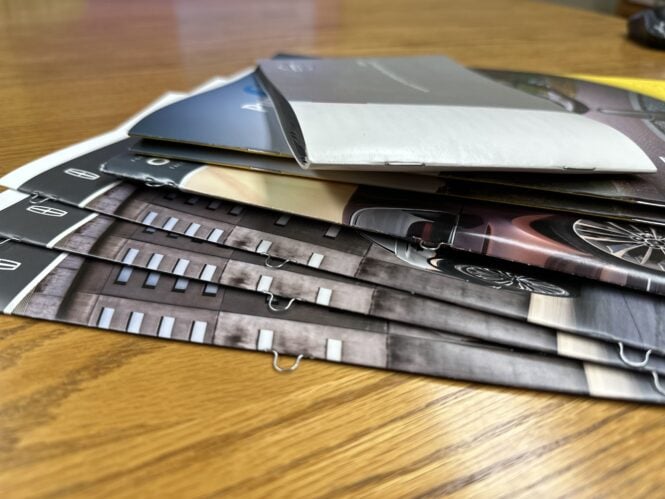Saddle stitching is a method of binding a booklet together by inserting wire staples or stitches through the fold line of the pages. At Allied Bindery, this common technique involves the following steps:
- Collation: Gather the pages in the desired order. These pages typically consist of folded sheets or signatures.
- Folding: Fold the sheets in half so that the pages are in the correct sequence.
- Positioning: Place the folded sheets or signatures on a saddle stitching machine. The machine has a saddle-shaped platform that supports the pages.
- Stitching: The machine drives wire staples or stitches through the fold line, binding the pages together. The staples are typically inserted through the center of the folded sheets.
- Trimming: Trim the edges of the booklet to achieve a clean and uniform finish.

Saddle stitching is used for booklets, brochures, catalogs, magazines, and other publications that have a relatively low page count. It is a cost-effective binding method that offers a secure and durable binding, though it is not as durable as other methods like perfect binding (where the pages are glued to the spine) for thicker publications.
Saddle stitching can only be used for booklets with a limited number of pages, since the thickness of the folded sheets or signatures determines the maximum page count. If a publication exceeds the capacity of saddle stitching, our other binding methods like perfect binding or mechanical binding services may be more suitable.
As part of our saddle-stitching services, we also offer loop stitching, where the staples contain an extra loops of wire on the spine to enable your print project to be bound in a ring binder or later threaded together.